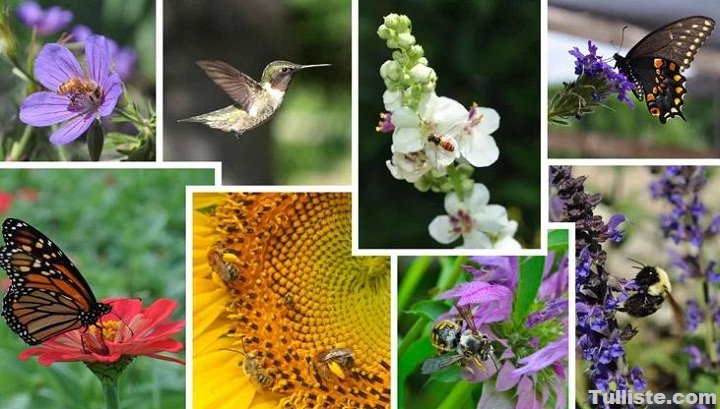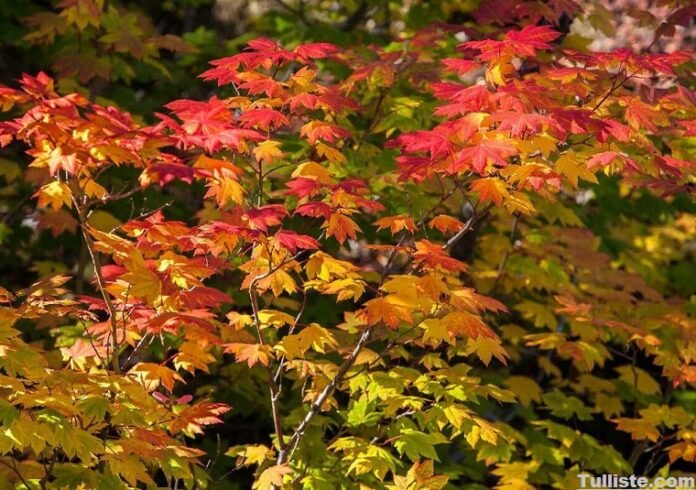Introduction to Acer circinatum
Welcome to the enchanting world of Acer circinatum, a species that plays a crucial role in the intricate tapestry of forest ecology. From its distinctive physical characteristics to its vital ecological contributions, join us on a journey to discover the unique significance of Acer circinatum in sustaining diverse ecosystems.
Physical Description and Range of Acer circinatum
Acer circinatum, also known as the vine maple, is a deciduous shrub or small tree native to the Pacific Northwest of North America. Its distinctive circular leaves and twisting branches make it easily recognizable in its natural habitat. The vine maple typically grows to around 20 feet tall, with a spreading canopy that provides shade and shelter for various forest creatures.
In terms of physical appearance, Acer circinatum features bright green leaves that turn vibrant shades of red and orange in the fall, adding a splash of color to the forest landscape. Its delicate flowers bloom in clusters during the spring months, attracting pollinators like bees and butterflies. The small winged seeds produced by this species are dispersed by wind or animals, aiding in its reproduction and spread across different ecosystems.
The range of Acer circinatum stretches from southern British Columbia down to northern California along the west coast of North America. It thrives in moist environments such as stream banks, forest edges, and shady slopes where it can access ample water supply for optimal growth. This species plays a crucial role in these ecosystems by providing food and habitat for wildlife while contributing to soil stability through its root system.
Habitat and Ecological Role of Acer circinatum
Acer circinatum, commonly known as the Vine Maple, thrives in moist, shaded environments along the Pacific Northwest coast of North America. Its habitat ranges from sea level to mountain slopes, showcasing its adaptability to various ecological niches. This versatile species plays a crucial role in forest ecosystems by providing food and shelter for diverse wildlife.
The sprawling branches of Acer circinatum create dense canopies that offer protection for smaller plants and animals underneath. As a deciduous tree, it contributes to nutrient cycling through leaf litter decomposition, enriching the soil with essential minerals. Additionally, its vibrant foliage adds aesthetic value to forest landscapes throughout the seasons.
In symbiotic relationships with mycorrhizal fungi, They enhances nutrient uptake while receiving support in water absorption. These mutualistic partnerships contribute to overall ecosystem health and resilience against environmental stressors. By fostering biodiversity and promoting soil fertility, this species exemplifies its significance in maintaining balanced forest ecosystems.
Mutualistic Relationships with Other Species
They plays a crucial role in forest ecosystems through its mutualistic relationships with other species. One such partnership is with various pollinators, including bees and butterflies, which help facilitate the reproduction of the vine maple by transferring pollen between flowers. In return, these pollinators benefit from a food source provided by the nectar of Acer circinatum’s blossoms.
Moreover, the roots of Acer circinatum form symbiotic relationships with mycorrhizal fungi in the soil. These fungi assist the tree in absorbing essential nutrients like phosphorus and nitrogen while receiving sugars produced during photosynthesis from the vine maple.
Additionally, wildlife such as birds and squirrels rely on Acer circinatum for shelter and food. The dense foliage provides nesting sites for avian species, while the seeds serve as a vital food source for small mammals during periods of scarcity.
These mutualistic interactions highlight the interconnectedness of species within forest ecosystems.

Impact of Human Activity on Acer circinatum and its Ecosystem
Human activity has undoubtedly left its mark on Acer circinatum and its surrounding ecosystem. Deforestation, urbanization, and pollution have all taken a toll on this species. The clearing of forests for agriculture or development disrupts the natural habitats where Acer circinatum thrives. This leads to a loss of biodiversity and can threaten the survival of these trees.
Pollution from industrial activities releases harmful chemicals into the air and water, impacting not only Acer circinatum but also other organisms in its ecosystem. Climate change resulting from human-induced greenhouse gas emissions further exacerbates the challenges faced by these trees.
Invasive species introduced by human activities can outcompete Acer circinatum for resources, disrupting the delicate balance within the ecosystem. Conservation efforts are crucial to mitigate these impacts and ensure that they continues to play its vital role in forest ecology.
Conservation Efforts for Acer circinatum
Conservation efforts for Acer circinatum are crucial in maintaining the health of its ecosystems. One approach involves protecting its habitat from deforestation and urban development, ensuring these majestic trees have space to thrive.
Collaborative initiatives between government agencies, conservation organizations, and local communities play a significant role in safeguarding Acer circinatum populations. By raising awareness about the importance of this species, more people can appreciate and support conservation efforts.
Furthermore, conducting research on the ecology and biology of Acer circinatum helps inform effective conservation strategies. This knowledge enables scientists to better understand how human activities impact these trees and their surrounding environment.
Implementing sustainable forestry practices is another key aspect of conserving it. By promoting responsible harvesting methods, we can help ensure that these beautiful trees continue to enrich our forests for generations to come.
Conclusion
They also known as the vine maple, plays a crucial role in forest ecology. Its unique physical features and wide distribution make it a significant component of Pacific Northwest ecosystems. Thriving in various habitats, They provides habitat and sustenance for diverse species through mutualistic relationships.
Despite its ecological importance, human activities pose threats to it and its ecosystem. Clearing land for development and logging can disrupt the delicate balance of this species with detrimental effects on biodiversity.
Conservation efforts are essential to protect Acer circinatum and preserve its vital role in forest ecosystems. Raising awareness about the importance of native species like Acer circinatum is key to promoting sustainable practices that safeguard our natural environment.
By understanding and valuing the ecological significance of it, we can work towards maintaining healthy forests that support a rich diversity of plant and animal life for generations to come. Let’s continue to appreciate and protect the vine maple as an integral part of our precious natural heritage.


